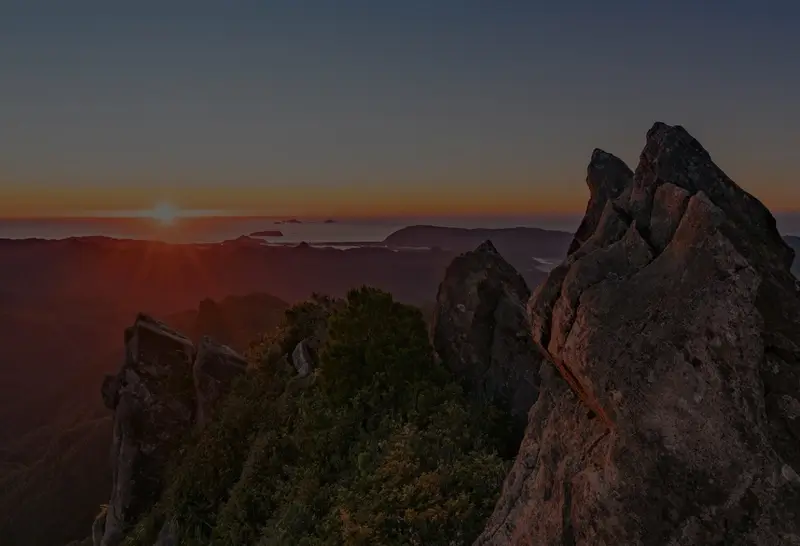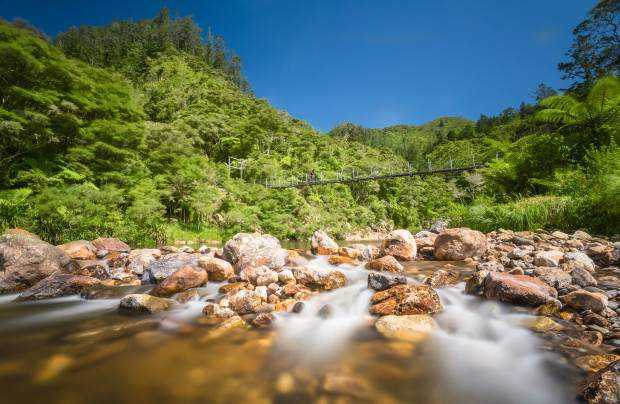The Coromandel Roadtrip
For somewhere so conveniently close to three major North Island cities, The Coromandel can still feel very much off the beaten track.
I’m like many Kiwis that as a kid spent long hot summers on The Coromandel at our parents’ chosen favourite holiday spot. Getting to the Coromandel as a youngster was an adventure of twisting roads flanked by bush-clad, craggy mountains and waterfalls, a roadside stop for rolled icecream and a picnic lunch before the long-anticipated river swim where cool clear water instantly dissolved any squabbles with my sister.
With much-improved road access nowadays, driving The Coromandel is easier but just as much fun.
It can take as little as a weekend to do a whistle stop tour around all of the unique communities that make up the Coromandel we know and love but it deserves much longer.
The place still fills with Kiwis (that’s the human kind) over Christmas and New Year when accommodation is hard to find. But the length of the holiday season has shrunk for city dwellers and outside of the period from Christmas Eve to the second weekend of January, you can choose from basic camping on a family-owned farm to renting a luxurious waterfront bach – or holiday home - where the beaches are often deserted.
I’ve never been quite fit enough to tackle the 200km road trip around the Coromandel by bike – though plenty of people do – but you won’t hold me back now the Hauraki Rail Trail has opened.
The trail features routes from the antique haven town of Paeroa to the thermal town of Te Aroha, or Paeroa to Waikino and Paeroa to Kopu on the Firth of Thames. Another planned route will take riders from Kopu to Thames.
This time around I chose to go by car and started with Thames, a former Gold mining boom town that has everything you need in a service centre without the crowds, cost or hassle of bigger cities. Thames is a ‘crafty’ town proud of its heritage and connected to the natural environment with an expansive bush wilderness as its backdrop.
The nearby Kauaeranga Valley is the best place to seek out campgrounds and bush walks which can be done as daytrips or by venturing further up the Coromandel ranges and staying overnight at the large hut owned and operated by the Department of Conservation.
I arrived in Thames on a Saturday - market day – when the northern end of town known as Grahamstown hosts stallholders outside the shops. Grahamstown is only a few blocks from what would be called the centre of Thames but has a relaxed charm that comes from its heritage buildings and intriguing selection of retail stores.
There’s a knitting shop, the unique New Zealand craft and art at Bounty, an organic co-op, a musical instrument trader, op shops and antiques along with cafes to take it all in from. From the tasteful all-white interior of Coco I ordered ginger crunch as sweet and spicy as it should be. The vegetarian and gluten free selections at Cafe Melbourne are equally good and provided me with lunch for a picnic up the coast later on. For a town so keen on preserving the charms of yesteryear Thames has certainly kept pace with the modern flat white culture.
The Thames market provides an even greater than usual selection of local produce with stallholders selling steaming crepes, artesian breads, specialty cheeses, rich chutneys and pickles, seedlings and plants.
There was still room in the car for more produce however, so on the way out of town I allowed myself a quick mooch around the locally loved Seagull Centre which I’d heard about from a friend who lives in Thames.
Not your traditional shopping experience, the Seagull Centre is a charitable trust that, as I discovered after talking to its friendly and enthusiastic manager, employs local people part-time and helps to reduce the amount of rubbish that goes to landfill.
Located at the entrance to the Thames refuse transfer station I found cheap retro treasures like a striped twin fin surfboard for $5 and a genuine eighties cassette case in perfect condition. Oh the therapy of retail.
With a surfboard in the car I was now truly prepared for a proper Coromandel road trip that would take in the surf of the east coast.
Don’t expect anything surfable on the west coastline from Thames to Coromandel, which is on the sheltered firth of Thames. The road winds along pebbled bays not spoilt by development of any kind, with rocky headlands wrapped in the gnarled, grey trunks of old Pohutukawa trees. Within an hour the road rises up through spectacular hill country reaching down to dotted islands at the mouth of the Hauraki Gulf.
It’s about an hour’s drive from Thames to Coromandel Town but worth making the journey part of your destination and taking a more leisurely pace.
I arrive in Coromandel Town just in time for a train ride at Driving Creek Railway. This bush-clad property is the creation and legacy of Barry Brickell, a Coromandel icon. A passionate man who described himself as an ACE – Artist, Conservationist, Engineer – spent 30 years building railway tracks, planting native bush and creating ingenious landscaping from recycled materials that give Driving Creek its charm.
At the highest point of the track you can take in impressive birdseye views of the town, its sheltered harbour with moored yachts and all the way to Auckland in the north. Coromandel Town is the gateway to many memorable walks through these hills where native bush meets isolated beaches. Campgrounds operated by DOC (the Department of Conservation) provide a true getaway.
I’m headed east, however, to the Coromandel’s Pacific coastline. First stop is the small settlement Whangapoua, reached by a drive alongside the golden hues of wetland and pretty bays that fringe the harbour. The town itself is little more than a collection of homes – many of them holiday homes or ‘baches’ – some of which can be rented via holiday home websites
After a walk along the white sand beach I head to the northern end where a walkway at the headland rises up and over to New Chum, which is voted among the best beaches in the world. It’s easy to see why so many kiwis have an attachment to this place, and the fact that it can only be accessed by trekking over a headland is all part of the allure.
Back on the road south I stop for a locally roasted coffee in Kuaotunu and carry on over the hill to Otama beach, where the sand has a whiter, finer quality than other beaches on the coast and the beach has been protected from housing development by a large stretch of reserve.
I park at the southern beach car park (it’s really just a field) and take the steps leading down to a rope swing strung from an ancient Pohutukawa. The feeling of pure freedom I remember as a child comes flooding back, and it doesn’t matter if I look silly since there is absolutely no-one else around.
That evening I spend an hour or two in The Lost Spring, an exquisitely landscaped thermal pool and spa complex in the heart of Whitianga. Within a few short years the Lost Spring has been voted Number 4 on the list of top 100 ‘must do’ activities in New Zealand and was also ranked the second highest spa in the country by a recent survey.
At night the steam swirls off the thermal water and the unpolluted sky glitters with stars. It’s a great place to lie and look out for shooting stars while sipping on a cocktail.
Just a half an hour’s drive south of Whitianga is another thermal wonderland that no self-respecting tourist would miss out on. Hot Water Beach is named for its spring of thermal water at a low tide point in the middle of the beach. Dig at the right spot on the right tide and you can create your own hot water pool, shaped to your liking. It’s a great place to meet people from all over the world as they lie next to you in the pools of hot water – until the tide pushes in and hilariously sends everyone shrieking.
Hotties cafe was a great place to grab lunch before a short walk at another white sand surf beach just north of Tairua. Sailors Grave – or Te Karo Bay – offers the option of swimming in the surf or a fresh water stream that flows into the bay. It’s a 20-minute walk over the headland at the north end to Otara Bay, where again I found myself alone on a magical beach.
Tairua offers many options for accommodation and eateries including the Tairua Beach Club and the Old Mill, both of which are located on the esplanade where boats come and go at the entrance to the Tairua harbour. Tairua and Pauanui sit on opposite sides of the harbour and both have sweeping ocean beaches and lots of activities from fishing and diving off shore to kayaking and world class golf.
For my final stop I visited Whangamatā, celebrated for its renowned surf and a vibrant retail centre where the line between beach and town are blurred. Unfortunately it seemed my $5 board wasn’t quite up to the waves at Whangamatā so luckily there were plenty of surf shops at which to hire something more reliable.
It’s great to get the sense of isolation that The Coromandel provides, it’s also nice to know the modern Coromandel has all your needs covered.


